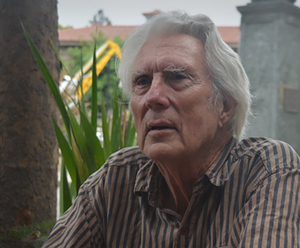Helping students spot medical pseudoscience

If things had gone differently, a new Studies in Medicine course that has garnered positive student feedback might have ended up as a comic book. Bringing the class from concept to reality took years of work, just the right teacher, and an unorthodox source of funding.
Delving into history, psychology, chemistry, ethics, and, yes medicine, the class explores the limits and potentials of health care. The curriculum was assembled by retired doctor Greg Gates, who also helps teach. He had noticed many of his patients held misconceptions about medicine.
His years of practice in what he calls a “virtual mini-Mecca for alternative and metaphysical thinking”—the Monterey Bay area—left him with a desire to help students recognize pseudoscience.
“If you sound like science, a lot of people will think, ‘Yeah, you’re science,’” he says.
Claims that sound like science persuade a lot of patients to use treatments that don’t work, Gates says. He also especially wanted patients to understand what disease really is and what doctors really do—and what they can’t do.
“It was amazing to me how many people think there’s a treatment for viruses,” he says. “People would come in with colds not realizing the odds are you’ve got a virus and the only thing that will help is time.”
A class years in the making
He started assembling his ideas into a cartoon-style textbook—think A Cartoon History of the Universe. Illustrating the book turned out to be too expensive, though. Instead, he turned his work into a syllabus and began approaching universities. Over several years, he approached various universities including UC Santa Cruz, before he met Grant Hartzog, professor of Molecular, Cell, and Developmental Biology, and found the right teacher.
“I saw the syllabus and it was great,” Hartzog says. “It was clear that he’d done a tremendous amount of work. I don’t think I could have done it on my own.”
In order to offer the class, the Molecular, Cell, and Developmental Biology Department needed to find funds to pay for it. So Gates donated the timber rights to his property in Corralitos. The proceeds from selectively logging the property every 11 years are more than enough to cover the cost of the course.
Hartzog and Gates have taught Studies in Medicine twice. Hartzog says Gates’s decades of treating patients give him credibility the students enjoy.
“They’re hungry to hear the stories of his experience as a clinician,” Hartzog says. “He brings a lot of authenticity to the course.”
For Nassim Lemseffer (Rachel Carson College ‘16, MCD biology), the discussions provided a valuable look into the realities of the medical profession and its history.
“I was amazed about how many diseases were found and cured just by chance!” Lemseffer says.
Jennifer Duberg (Cowell ‘17, biology) said she appreciated the curriculum, which delves into philosophy and ethics along with history, biology, and the social dynamics between patients and doctors.
“I would come home everyday after class and have so many really fascinating things to tell my roommates about what I had learned,” she says.
Duberg also took to heart Gates’s lectures about pseudoscientific medicine.
“It taught me to think very, very critically about products out on the market claiming medicinal benefit, and compare claims to true evidence-based medicine,” she says.
Gates says the in-depth discussion of how doctors think helps students considering careers in medicine. It also helps everyone understand how to get the best results from a visit to the doctor.
Now that it is established, Gates is seeking funding to build an online presentation based on the course.